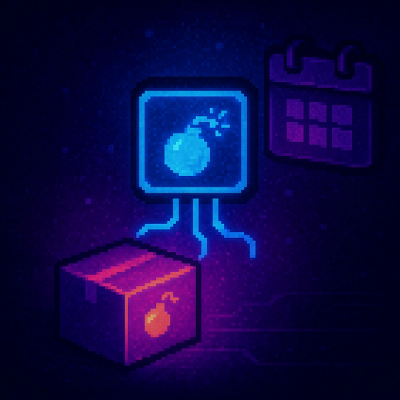
Security News
Meet Socket at Black Hat Europe and BSides London 2025
Socket is heading to London! Stop by our booth or schedule a meeting to see what we've been working on.
@hyperledger/cactus-example-supply-chain-backend
Advanced tools
An example application showing how to use Cactus when implementing a supply chain application where two or more blockchains are sharing data with each other to achieve a certain business outcome beneficial to multiple parties (business organizations).
docker run \
--rm \
--privileged \
-p 3000:3000 \
-p 3100:3100 \
-p 3200:3200 \
-p 4000:4000 \
-p 4100:4100 \
-p 4200:4200 \
ghcr.io/hyperledger/cactus-example-supply-chain-app:2024-03-08--pr-3059-1
INFO (api-server): Cactus Cockpit reachable http://127.0.0.1:3200# Change directories to the project root
# Build the docker image and tag it as "scaeb" for supply chain app example backend
DOCKER_BUILDKIT=1 docker build --file \
./examples/cactus-example-supply-chain-backend/Dockerfile \
. \
--tag scaeb \
--tag ghcr.io/hyperledger/cactus-example-supply-chain-app:$(git describe --contains --all HEAD)_$(git rev-parse --short HEAD)_$(date -u +"%Y-%m-%dT%H-%M-%SZ")
# Run the built image with ports mapped to the host machine as you see fit
# The --privileged flag is required because we use Docker-in-Docker for pulling
# up ledger containers from within the container in order to have the example
# be completely self-contained where you don't need to worry about running
# multiple different ledgers jus this one container.
docker run --rm -it --privileged -p 3000:3000 -p 3100:3100 -p 3200:3200 -p 4000:4000 -p 4100:4100 -p 4200:4200 scaeb
Building the image with a specific npm package version:
DOCKER_BUILDKIT=1 docker build \
--build-arg NPM_PKG_VERSION=jwt-supply-chain \
--file ./examples/cactus-example-supply-chain-backend/Dockerfile \
--tag scaeb \
./
Make sure you have all the dependencies set up as explained in
BUILD.md
On the terminal, issue the following commands:
npm run enable-corepacknpm run configureyarn start:example-supply-chainOn the terminal, issue the following commands (steps 1 to 6) and then perform the rest of the steps manually.
npm run enable-corepackyarn run configureyarn build:devcd ./examples/cactus-example-supply-chain-backend/yarn installcd ../../.vscode/template.launch.json file"Example: Supply Chain App".vscode/launch.json fileRun and Debug panel on the left should have an option also titled "Example: Supply Chain App" which starts the applicationnpm run enable-corepacknpm run configureyarn build:dev.vscode/template.launch.json file"Example: Supply Chain App".vscode/launch.json fileRun and Debug panel on the left should have an option also titled "Example: Supply Chain App" which starts the applicationcd ./examples/cactus-example-supply-chain-frontend/yarn serve:proxy./examples/cactus-example-supply-chain-frontend/ path it will automatically reload the browser window (you will need to paste in the JWT again when this happens)FAQs
An example application showing how to use Cactus when implementing a supply chain application where two or more blockchains are sharing data with each other to achieve a certain business outcome beneficial to multiple parties (business organizations).
The npm package @hyperledger/cactus-example-supply-chain-backend receives a total of 129 weekly downloads. As such, @hyperledger/cactus-example-supply-chain-backend popularity was classified as not popular.
We found that @hyperledger/cactus-example-supply-chain-backend demonstrated a not healthy version release cadence and project activity because the last version was released a year ago. It has 2 open source maintainers collaborating on the project.
Did you know?

Socket for GitHub automatically highlights issues in each pull request and monitors the health of all your open source dependencies. Discover the contents of your packages and block harmful activity before you install or update your dependencies.

Security News
Socket is heading to London! Stop by our booth or schedule a meeting to see what we've been working on.

Security News
OWASP’s 2025 Top 10 introduces Software Supply Chain Failures as a new category, reflecting rising concern over dependency and build system risks.

Research
/Security News
Socket researchers discovered nine malicious NuGet packages that use time-delayed payloads to crash applications and corrupt industrial control systems.